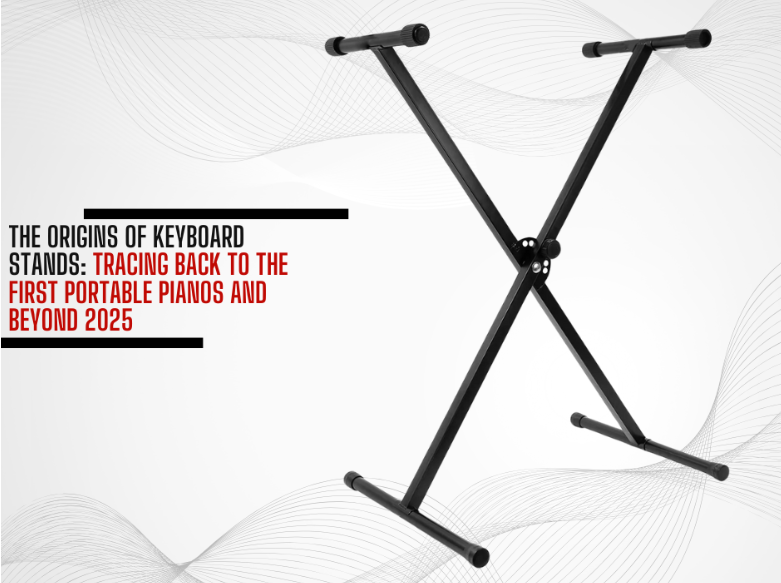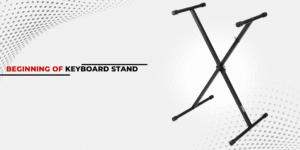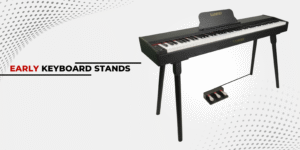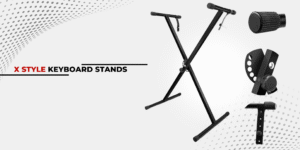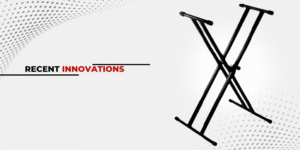The invention of keyboard stands is as old as the development of keyboard instruments themselves. Stand innovations date back to the ancient hydraulis and have proceeded in parallel with advances in keyboard instruments like electric keyboards, which require a more sophisticated mobile support. Today we are smart keyboard stands for the musicians.
In this blog, we will trace back the future of keyboard stands, starting from the early piano to the modern keyboard stand.
Ancient Beginnings: The Hydraulis
Introduction to the Hydraulis:
The early ancestor from which the evolution of keyboard instruments starts is the hydraulis, a Greek-type instrument invented by Ctesibius of Alexandria around 300 BCE. This hydraulic organ accommodates a much-enhanced pressure-operated keyboard instrument that established norms for contemporary keyboards.
The Evolution to Pipe Organs:
With the advancement of technology, the hydraulis evolved into the pipe organ, which became a standard of sacred music during the early years. Pipe organs were enormous constructions with several consoles, where each key activated a mechanism, allowing the passage of air that produced distinct pitches with varying length pipes.
Mechanical Keyboards and Early Keyboard Stands:
Development of Mechanical Keyboards:
The fourteenth century saw the emergence of the clavichord and harpischord. These mechanical keyboards only required simple platforms for support, such as wooden benches or simple tables. With the evolving trends of music, portable dedicated stands became essential.
Initial Movable Pianos:
The creation of the pianoforte during the 18th century was very important. The first pianos created were bulky, but as they became more portable, musicians began to require stands that would support the instrument securely while performing. These stands were basic wooden constructions or even homemade.
These keyboard stands were made out of wooden planks, which provided sturdiness, but neither they were portable nor durable.
Mid 20th Century: Keyboards
Rise of Keyboards:
With the invention of electronic keyboards in the mid-20th century, it’s fair to say everything changed. These devices were far lighter and easier to carry than anything mechanical. This brought about the new era of electric keyboard stands that were lightweight and easy to install.
Stands with X frame:
In the 80s, single-X style and double-X style keyboard stands like the On Stage KS7190, Aepxton AP3201 and 5 Core single-X keyboard stands became a lot more popular because people started recognizing their portability and ease of usage. These stands were perfect for performers that needed a stable setting for gigs and also for casual practicing at home.
- Pros: These X-style keyboard stands were portable and easy to carry around.
- Cons: One of the downsides of these keyboards was that they were not able to hold much weight.
Recent Innovations: Intelligent Keyboard Stands:
Connecting Smart Tech:
Keyboard stands have started to incorporate smart technology features in recent years. Some have built-in cable management systems, and there are USB ports to charge devices or plug in MIDI controllers. And these advances have changed stands from pieces of equipment to part of the sharing experience of music.
Eco-friendly options:
In terms of sustainability moving forward into 2025 and beyond, sustainability is becoming a significant consideration in manufacturing processes. These days, many brands are committing to sustainable, eco-friendly materials and processes, giving environmentally conscious musicians the opportunity to effect change in their sound. A keyboard stand, possibly in combination with smart keys, Bluetooth, and new sound systems, can add an entirely new dimension of technology to the playing experience.
Conclusion:
In a way, keyboard stands are representative of the progress made within the field of music technology and design. From ancient precursors to modern smart stands, each decade brought new innovations to address changing musician needs. It’s exciting to speculate about how these stands will evolve and adapt alongside the music they support as we move into 2025 and beyond.

